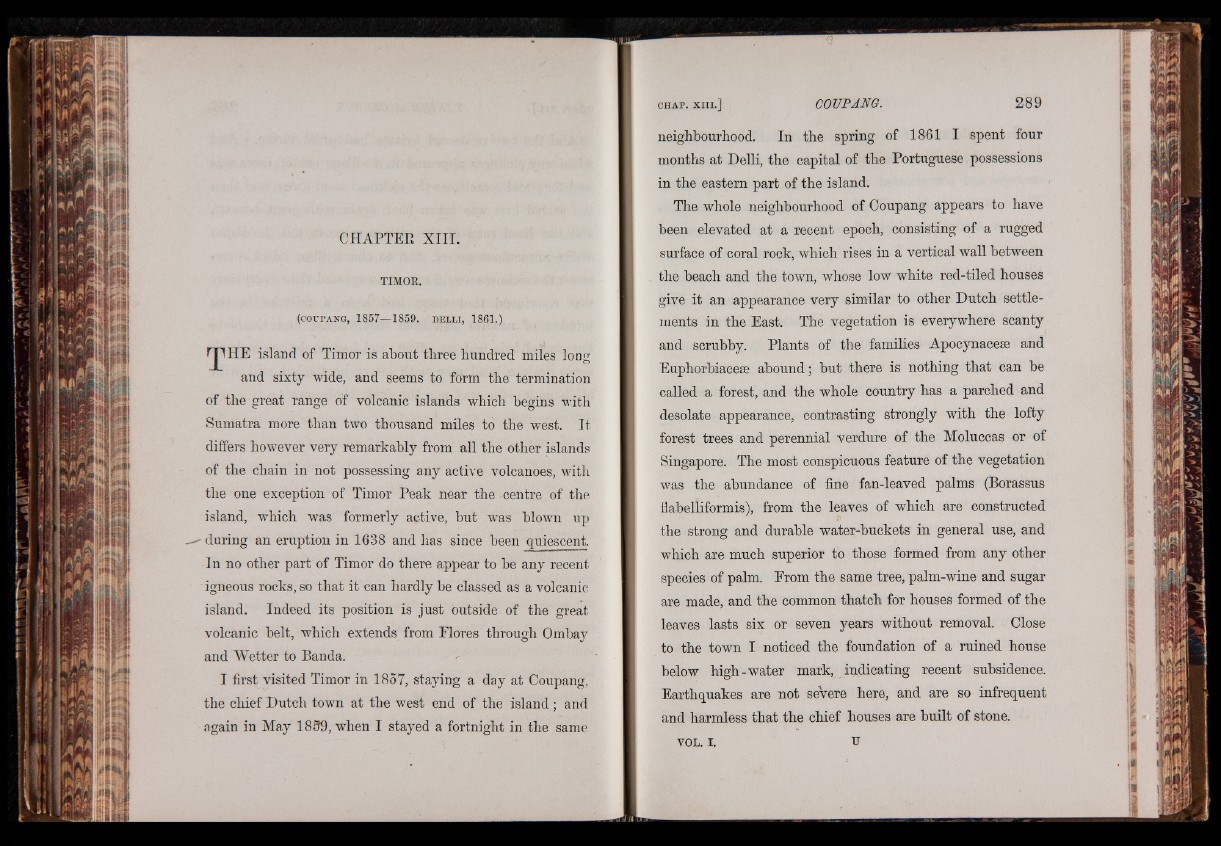
CHAPTER XIII.
TIMOR.
(COTTANG, 1857— 1859. DELLI, 1861.)
rjlH E island of Timor is about three hundred miles long
and sixty wide, and seems to form the termination
of the great range of volcanic islands which begins with
Sumatra more than two thousand miles to the west. It
differs however very remarkably from all the other islands
of the chain in not possessing any active volcanoes, with
the one exception of Timor Peak near the centre of the
island, which was formerly active, but was blown up
during an eruption in 1638 and has since been quiescent.
In no other part of Timor do there appear to be any recent
igneous rocks, so that it can hardly be classed as a volcanic
island. Indeed its position is just outside of the great
volcanic belt, which extends from Flores through Ombay
and Wetter to Banda.
I first visited Timor in 1857, staying a day at Coupang,
the chief Dutch town at the west end of the island ; and
again in May 1839, when I stayed a fortnight in the same
neighbourhood. In the spring of 1861 I spent four
months at Delli, the capital of the Portuguese possessions
in the eastern part of the island.
The whole neighbourhood of Coupang appears to have
been elevated at a recent epoch, consisting of a rugged
surface of coral rock, which rises in a vertical wall between
the beach and the town, whose low white red-tiled houses
give it an appearance very similar to other Dutch settlements
in the East. The vegetation is everywhere scanty
and scrubby. Plants of the families Apocynaceae and
Euphorbiacese abound; but there is nothing that can be
called a forest, and the whole country has a parched and
desolate appearance, contrasting strongly with the lofty
forest trees and perennial verdure of the Moluccas or of
Singapore. The most conspicuous feature of the vegetation
was the abundance of fine fan-leaved palms (Borassus
flabelliformis), from the leaves of which are constructed
the strong and durable water-buckets in general use, and
which are much superior to those formed from any other
species of palm. From the same tree, palm-wine and sugar
are made, and the common thatch for houses formed of the
leaves lasts six or seven years without removal. Close
to the town I noticed the foundation of a ruined house
below high-water mark, indicating recent subsidence.
Earthquakes are not seVere here, and are so infrequent
and harmless that the chief houses are built of stone.
v o l . i . u